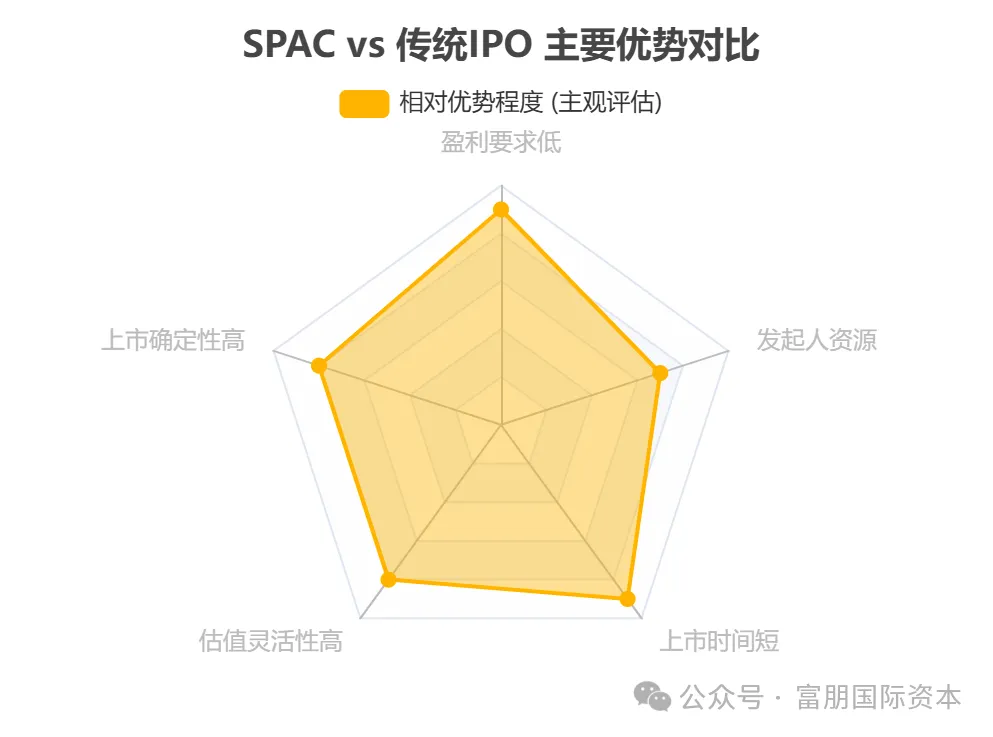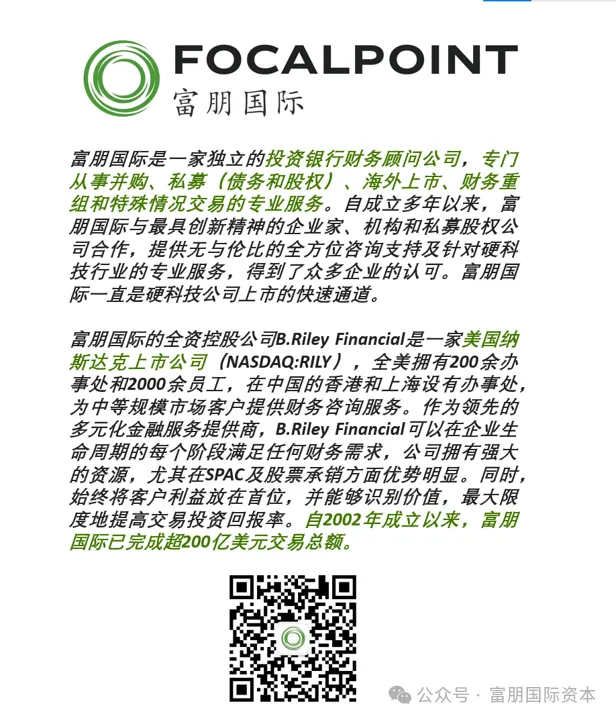01 Capital selection from a global perspective
In recent years, the global capital market has been changing rapidly, and the road to overseas listing of Chinese companies has also been full of ups and downs. Hong Kong Exchanges and Clearing Limited (HKEX) has continued to make reforms, including optimizing the Corporate Governance Code (to take effect on July 1, 2025), launching a consultation on optimizing IPO pricing and open market regulations, formally implementing the treasury stock mechanism (to take effect on June 11, 2024), and actively promoting the legislation of the company relocation system (the “Companies (Amendment) (No. 2) Bill 2024” was passed by the Legislative Council on May 14, 2025 and will take effect on May 23, 2025), aiming to attract more foreign-registered companies to relocate to Hong Kong.
However, facing the renewed enthusiasm for capital and policy dividends on the banks of the Hong Kong River, should Chinese companies limit their focus to this? Does the temporary market enthusiasm mean that this is the best choice for all companies? This article aims to conduct a “cold thinking” and deeply analyze the characteristics of the two major overseas listing locations, Hong Kong and the United States. We believe that although the attractiveness of the Hong Kong market is increasing day by day, for Chinese companies with global ambitions, pursuing high growth, and expecting to obtain a higher valuation ceiling,The U.S. stock market remains a highly strategically valuable and, in some cases, superior capital market choice, thanks to its unparalleled market depth, deep understanding and valuation inclusiveness of innovative technology companies, and diversified and efficient listing paths including SPAC/De-SPAC.
- Interpretation of the new Hong Kong listing rules and their attractiveness to enterprises
Revisions to the Corporate Governance Code: According to Latham & Watkins’ summary of regulatory developments, the Stock Exchange has published a consultation conclusion on the review of the Corporate Governance Code and related Listing Rules. The new rules will take effect on July 1, 2025. These revisions are intended to further enhance the governance of Hong Kong listed companies and better align them with international standards. The regulations include:
Optimizing IPO market pricing and open market regulations: The Stock Exchange published a consultation paper on this issue on December 19, 2024 (the consultation period ends on March 19, 2025), proposing a comprehensive reform of the IPO market pricing process and the regulatory framework of the open market to improve pricing efficiency and increase the participation of “bargaining power” investors.
Treasury stock mechanism is officially implemented: From June 11, 2024, the Stock Exchange allows listed companies to hold repurchased shares as treasury shares, provided that they comply with the laws of their place of incorporation. Listed companies registered in Hong Kong will also be able to use this mechanism due to the implementation of the Companies (Amendment) Ordinance 2025 on April 17, 2025. This enhances the flexibility of enterprises in capital management, such as employee equity incentives, M&A payments, or resale at the appropriate time.
Legislation and implementation of the company re-registration system: The Companies (Amendment) (No. 2) Bill 2024 has been passed and will come into effect on May 23, 2025. The system aims to facilitate non-Hong Kong registered companies (especially those with their business focus in Hong Kong or the Asia-Pacific region) to relocate their registered places to Hong Kong while maintaining the continuity of their legal entities, simplifying procedures and reducing costs, thereby attracting more high-quality companies to settle in Hong Kong.
These new policies will undoubtedly benefit enterprises: for example,The special technology company rules provide a new listing path for some unprofitable or small-revenue technology innovation companies: the reform of the IPO pricing mechanism and the optimization of the approval process are expected to improve the efficiency of market operation; while the treasury stock and transfer registration system provide companies with greater flexibility in financing and capital operations.As a result, the number of inquiries about companies going public in Hong Kong and the attention paid to certain types of companies (such as companies that meet the requirements of Chapter 18C) have increased.
02 The strategic value of the U.S. stock market to enterprises
Although the Hong Kong market is actively seeking change, the U.S. stock market, with its profound heritage and unique advantages, still has an irreplaceable strategic position for many ambitious Chinese companies.
- The Arena of Global Capital: In-depth Analysis of the Core Competitiveness of the U.S. Stock Market
Unrivaled market depth and breadth: The United States has the world’s largest and most liquid capital market. The market value of U.S. stocks exceeds $50 trillion, and the average daily trading volume is as high as about $250 billion. This size means that companies can obtain larger financing in the U.S. stock market, access a wider global investor base, and enjoy stronger secondary market liquidity guarantees.

Howard Marks, co-founder and chairman of Oaktree Capital
Valuation system and flexibility that leads innovation: The U.S. stock market, especially Nasdaq, is known for its deep understanding and high valuation tolerance for innovative companies such as high-tech, new economy, and biomedicine. As of the fourth quarter of 2024, the average return on equity (ROE, TTM) of Chinese technology assets listed on the U.S. stock market was 12.0%, higher than the 10.1% of Hong Kong stocks. Investors are more willing to pay a premium for the “future growth potential” of companies.Howard Marks, chairman of Oaktree Capital, recently reiterated that the United States remains a preferred destination for investors with its vibrant economy, respect for free markets and the rule of law, and its innovative spirit. Al-Sabah, managing director of the Kuwait Investment Authority, also expressed a similar view, believing that “reducing US asset allocation is at your own risk.”
This indirectly reflects the confidence of large institutions in the prospects of the US market and their recognition of the value of innovation.
Efficient liquidity and trading activity: Institutional investors account for more than 70% of the U.S. stock market, there are many market participants, and the stock turnover rate is generally high. High liquidity not only ensures the efficiency of stock pricing and facilitates the execution of large transactions, but also provides shareholders with a relatively smooth exit mechanism, which is particularly important for early investors and shareholding employees.
International investor structure and mature investment philosophy: The U.S. stock market has the largest number of institutional investors in the world, with extensive and professional analyst coverage and generally high-quality research reports. International investors usually pay more attention to the long-term value, core competitiveness, transparency of corporate governance and sustainable development capabilities (ESG) of enterprises. Obtaining the recognition of these mature investors will not only help stabilize and improve stock prices, but also greatly enhance the international reputation and brand value of enterprises.
03 Diverse listing paths for US stocks
The U.S. stock market not only has advantages in “quality”, but its “diversified” listing paths also provide flexible options for Chinese companies of different types and at different stages of development.
-
Traditional IPO: The golden door to building an international brand
Maximizing global branding: Listing on the New York Stock Exchange (NYSE) or NASDAQ through a traditional IPO is a strong endorsement of the company’s strength, standardization and internationalization. This helps to significantly enhance the company’s visibility and credibility in the global market, thereby attracting international customers, top talents and strategic partners.
Potential to obtain optimal valuation and capital: Traditional IPOs usually involve the participation of the world’s top investment banks in underwriting, and conduct roadshows and inquiries for the world’s most diverse institutional investors. Sufficient market competition and professional value assessment mechanisms help companies achieve fair or even premium valuations and raise sufficient development funds.
Refining corporate governance and operations with international standards: US IPOs require companies to comply with the strict regulatory requirements of the US Securities and Exchange Commission (SEC), as well as laws and regulations such as the Sarbanes-Oxley Act (SOX Act). Although this means higher compliance costs and stricter disclosure obligations, in the long run, high-standard supervision can force companies to improve internal control, financial transparency and overall corporate governance, which can not only enhance investor trust, but also lay a solid foundation for the long-term and healthy development of companies.
- SPAC (Special Purpose Acquisition Company): An innovative bridge to efficiently connect with the capital market
SPAC (Special Purpose Acquisition Company) is a “cash shell company” specially established for the purpose of acquiring high-quality private enterprises. It first raises funds through IPO (funds are usually deposited in a trust account), and then finds and completes a merger with one or more target companies within a specified period (usually 18-24 months) (this process is called De-SPAC transaction), so that the target company can be listed indirectly. The core logic of the SPAC model is “money waiting for projects”, rather than the traditional IPO “projects looking for money”.
For target companies, especially those innovative companies that have not yet made a profit, the SPAC model has unique advantages:

This radar chart is a subjective quantitative expression based on the generally perceived advantages of the SPAC model and is not precise data.
Low profit requirements, embrace high growth: Unlike traditional IPOs, which usually have strict requirements on historical profit records, the SPAC model has more flexible profit requirements for target companies. It allows valuation based on future profit forecasts and growth potential, which opens the door to the public capital market for many technological innovation companies that are in a period of rapid development but have not yet achieved large-scale profits in the short term (such as new energy, biotechnology, artificial intelligence and other fields).
High certainty of listing and controllable time: Under the SPAC model, the target company mainly negotiates with the SPAC sponsor on valuation and merger terms. Once an agreement is reached, the subsequent process is significantly more certain than the long and uncertain roadshow, bookkeeping and regulatory approval process in traditional IPOs, and the overall listing time can usually be shortened by 3-6 months. As industry expert Feng Lin pointed out: “DE-SPAC has several core advantages. First, certainty is high. The listing time is certain, the financing amount is certain, and the valuation is certain. Especially when the market enters a bear market or is close to a bear market, many founders are not pursuing valuation maximization, but certainty.”
Valuation flexibility and market-based pricing: The valuation of the target company is mainly determined through commercial negotiations with the SPAC sponsor, which can more fully reflect the company’s future growth potential and unique value, rather than relying solely on historical financial data. The transaction structure is flexible in design and is often combined with PIPE (Private Investment in Public Equity) financing to further enhance the certainty of the transaction and the scale of financing, and introduce strategic investors.
Assistance from experienced sponsors: Many SPAC sponsors or management teams are experienced entrepreneurs, investors or industry experts themselves. They can not only bring capital, but also provide valuable resources and guidance to the target company in strategic planning, market expansion, corporate governance and other aspects.
Financing is available as soon as the transaction is completed to help business development: Through De-SPAC transactions, the target company not only obtains the status of a listed company, but also immediately obtains the funds held in the SPAC trust account (after deducting the redemption portion) and the PIPE financing that usually accompanies the completion of the transaction. These funds can provide important “fuel” for key development stages such as business expansion, R&D investment, market expansion, and talent recruitment.
04 Objective perspective: Hong Kong listing still faces challenges
Intensified market competition and management of valuation expectations: If a large number of companies go public in Hong Kong in a short period of time, especially in certain popular sectors, market competition may intensify. For small and medium-sized companies or those with less distinctive characteristics, they may face the risk of increasing difficulty in attracting investors’ attention, valuation levels not meeting expectations, or even difficulties in issuance. Companies need to have reasonable expectations for valuations and be fully prepared to clearly explain their uniqueness and investment value to the market.
The “Matthew effect” of uneven liquidity distribution: Although the overall liquidity of the Hong Kong market is improving, resources and attention tend to be concentrated on a few large, well-known blue-chip stocks or IPOs and leading listed companies in hot industries. Some small and medium-sized enterprises or companies in non-hot industries may face problems of insufficient stock trading and relatively insufficient liquidity after listing. This not only affects stock price discovery, but may also cause certain troubles to subsequent refinancing capabilities and the exit of early shareholders.
Differences in the depth and breadth of internationalization: The Hong Kong market is undoubtedly internationalized, but compared with the U.S. stock market, the world’s largest capital market, there may still be some differences in the globalization breadth of its investor structure, the depth of its understanding of the world’s most cutting-edge technologies and business models, and its inclusiveness. This may affect the company’s global branding and its ability to continue to attract diversified international capital.
- Careful planning and precise moves: the US stock market remains a strategic high ground for Chinese companies
There is no doubt that the Hong Kong capital market has undergone positive changes and has become more attractive in recent years. It has provided Chinese companies with an important financing platform and a window to connect with international capital. However, when we look at the global capital market landscape and conduct in-depth comparative analysis, it is not difficult to find that the U.S. stock market still relies on its unshakable core advantages – including unparalleled market size and liquidity, a more favorable valuation system for innovative and high-growth companies, mature and diversified listing paths (traditional IPOs, SPACs and De-SPACs), and strong global influence – for Chinese companies that have an international vision, pursue higher growth ceilings, and are committed to becoming global or industry leaders, it is still an indispensable and even more strategic capital market choice in many cases.
Looking ahead, with the continuous transformation and upgrading of China’s economy and the accelerating pace of enterprises’ “going out”, we have reason to believe that more and more Chinese enterprises with core technologies, innovation capabilities and international competitiveness will actively seek to allocate resources in the global capital market, enhance brand image and maximize corporate value. The US stock market, as the core hub of global capital allocation and the gathering place of innovative enterprises, will continue to provide these outstanding Chinese “expeditionary forces” with a key stage to demonstrate their own value and connect global opportunities. Only by rational choice and accurate positioning can we move forward steadily and achieve long-term success in this magnificent wave of the global capital market.
